
Biomicrofluidics
metrics 2024
Bridging disciplines to drive progress in colloid and surface chemistry.
Introduction
Biomicrofluidics is a leading academic journal published by AIP Publishing, dedicated to disseminating cutting-edge research in the interface of microfluidics and biotechnology. Established in 2007 and continuing through 2024, this journal serves as a vital resource for researchers and professionals across various fields, including Biomedical Engineering, Colloid and Surface Chemistry, Condensed Matter Physics, and Nanoscience. With impactful insights and innovative methodologies, it maintains a commendable reputation, reflected in its impressive Scopus rankings, such as 24th in Fluid Flow and Transfer Processes and 10th in Colloid and Surface Chemistry. Although not an open-access journal, Biomicrofluidics ensures accessibility to its valuable content through various subscription options, facilitating knowledge sharing in scientific communities. This journal is essential for those at the forefront of microfluidic technologies and applications, offering a platform for exploring novel approaches and driving advancement in biomedical and engineering sciences.
Metrics 2024
 -
- 2.60
2.60 2.80
2.80 -
-Metrics History
Rank 2024
IF (Web Of Science)
JCI (Web Of Science)
Quartile History
Similar Journals

Journal of Micro-Bio Robotics
Exploring the Future of Robotics and BiologyThe Journal of Micro-Bio Robotics, published by SPRINGER HEIDELBERG, is an esteemed periodical dedicated to the dynamic intersection of robotics and biological systems. With an ISSN of 2194-6418 and an E-ISSN of 2194-6426, this journal spans a broad spectrum of interdisciplinary research from 2013 to 2024, reflecting its commitment to advancing knowledge in fields such as biomedical engineering, biotechnology, electrical and electronic engineering, materials science, and mechanical engineering. This journal holds a Q4 ranking in Biomedical Engineering and a Q3 ranking in several other critical categories, demonstrating its growing influence within the scientific community. The journal serves as a vital resource for researchers, professionals, and students aiming to explore cutting-edge developments in micro-bio robotics, providing a platform for high-impact research that helps facilitate innovation and collaboration in this emerging field. While currently not offering Open Access options, the journal's rigorous peer-review process ensures the highest quality of published work, making it an essential tool for anyone looking to stay abreast of advancements in micro-bio robotic technology.
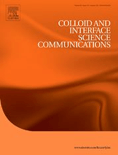
Colloid and Interface Science Communications
Fostering Collaboration in Cutting-edge Scientific DiscoveriesColloid and Interface Science Communications is a prestigious peer-reviewed journal published by Elsevier, specializing in the vibrant fields of colloid and surface science, along with biotechnology. With an impressive open access policy initiated in 2022, this journal ensures wide dissemination of groundbreaking research. Its impact is reflected in its high standings within various Scopus category quartiles—ranked Q2 in Biotechnology and Colloid and Surface Chemistry, and Q1 in Materials Chemistry, Physical and Theoretical Chemistry, as well as Surfaces, Coatings and Films for 2023. Furthermore, it boasts exceptional Scopus rankings, including a top percentile position in several materials science categories, indicating its significant contribution to the scientific community. Published in the Netherlands, Colloid and Interface Science Communications aims to foster knowledge sharing and collaboration by providing a platform for innovators and researchers to explore cutting-edge developments in surface phenomena and materials interactions. As a key resource for researchers, professionals, and students alike, it plays a critical role in advancing our understanding and application of colloidal and interface science.
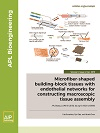
APL Bioengineering
Transforming Ideas into Bioengineering BreakthroughsAPL Bioengineering is a premier open-access journal published by AIP Publishing, dedicated to advancing the field of bioengineering and its interdisciplinary applications. Established in 2017, this journal serves as a vital platform for researchers, professionals, and students interested in the critical intersections of bioengineering, biomaterials, biomedical engineering, and biophysics. With an impressive impact factor and consistent rankings in the Q1 category across multiple domains, including biochemistry and materials science, APL Bioengineering has positioned itself among the top journals in its field. The journal aims to publish innovative original research, comprehensive reviews, and insightful case studies that further the understanding and application of bioengineering principles. Since its inception, APL Bioengineering has fostered a community of thought leaders, providing open access to ensure broad dissemination of knowledge and advancements that underpin the future of biomedical innovation.

Nanoscale Research Letters
Empowering researchers to share groundbreaking findings.Nanoscale Research Letters, published by SPRINGER, is a leading open-access journal dedicated to the rapid dissemination of innovative research in the field of nanoscience and nanotechnology. Established in 2006, this journal provides researchers and professionals with a platform to share their groundbreaking findings across a broad spectrum of applications, including condensed matter physics and materials science. With an impressive Q1 ranking in both Condensed Matter Physics and Materials Science categories as of 2023, it asserts its position as a top-tier publication within the scientific community, bolstered by a 96th percentile rank in the Scopus database. Nanoscale Research Letters not only emphasizes the importance of nanotechnology research but also ensures that its findings are widely accessible, adhering to its open-access mandate. Scholars and students alike are encouraged to contribute to and engage with this dynamic resource, fostering collaboration and innovation in the ever-evolving world of nanoscience.
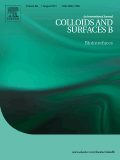
COLLOIDS AND SURFACES B-BIOINTERFACES
Connecting Science and Application in Colloid ResearchCOLLOIDS AND SURFACES B-BIOINTERFACES is a premier interdisciplinary journal published by Elsevier, dedicated to advancing the knowledge of interfaces and interactions in biological systems and their applications in biotechnology. With an impressive impact factor that underscores its significance in the field, the journal ranks in the Q1 category for Biotechnology, Medicine, and Physical and Theoretical Chemistry in the 2023 classifications. It has achieved notable positions in Scopus rankings, highlighted by a top-tier rank in Colloid and Surface Chemistry, demonstrating its influence on ongoing research. Spanning from 1993 to 2025, C&B B-BIOINTERFACES serves as a vital platform for innovative research contributions, fostering knowledge exchange among researchers, professionals, and students. The journal focuses on the intricate relationships between colloids, surfaces, and biological materials, paving the way for groundbreaking developments in drug delivery, biomaterials, and nanotechnology. While not an open-access publication, readers can anticipate insightful, high-quality articles that significantly impact the scientific community.
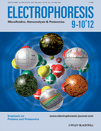
ELECTROPHORESIS
Elevating Standards in Electrophoretic TechniquesELECTROPHORESIS, published by Wiley, stands as a premier journal dedicated to advancing the field of analytical chemistry, biochemistry, and clinical biochemistry. With an ISSN of 0173-0835 and an E-ISSN of 1522-2683, this journal has been a vital resource since its inception in 1980 and is poised to continue its journey through to 2024. Operating out of Germany, it holds a significant standing in the academic community, featuring in the Q2 category for Analytical Chemistry and in the Q3 tier for both Biochemistry and Clinical Biochemistry as of 2023. The journal ranks impressively within Scopus, occupying the 43rd position out of 156 in Analytical Chemistry and the 44th spot out of 117 in Clinical Biochemistry, ensuring its relevance and impact in these disciplines. Although it does not currently offer open access, ELECTROPHORESIS remains an essential publication for researchers, professionals, and students seeking cutting-edge insights and developments that influence the methodologies and technologies underpinning electrophoretic techniques.

Nanotechnology and Precision Engineering
Shaping the future of engineering with cutting-edge research.Nanotechnology and Precision Engineering is a leading open access journal published by AIP Publishing, dedicated to advancing the fields of nanotechnology and precision engineering. Established in 2006, the journal has become a vital resource for researchers, professionals, and students, reflecting the latest advancements in Electrical and Electronic Engineering, Industrial and Manufacturing Engineering, Instrumentation, Mechanical Engineering, and Nanoscience. With an impressive variety of quartile rankings in Scopus—notably Q1 in several key engineering domains—the journal provides a robust platform for disseminating groundbreaking research. Noteworthy aspects include its open access format introduced in 2018, ensuring that high-quality research is freely accessible to a global audience. By maintaining a commitment to excellence and collaboration, Nanotechnology and Precision Engineering plays a crucial role in shaping the future of technology and innovation.

BIOMEDICAL MICRODEVICES
Elevating Healthcare Through Cutting-Edge MicrotechnologyBIOMEDICAL MICRODEVICES is a leading journal published by Springer that focuses on the innovative field of microdevices within biomedical engineering. With an ISSN of 1387-2176 and an E-ISSN of 1572-8781, BIOMEDICAL MICRODEVICES offers a prestigious platform for researchers to disseminate their findings from 1998 to 2024, demonstrating a long-standing commitment to advancing knowledge in this critical area. The journal is recognized for its significant contributions, boasting a Q2 ranking in Biomedical Engineering and Nanoscience and Nanotechnology, and a Q3 rank in Molecular Biology. Renowned for its rigorous peer-review process, it is positioned within the top 30% of its field according to Scopus rankings, making it a valuable resource for researchers and practitioners alike. Though it operates under a subscription model, the emphasis on quality and relevance within its scope ensures that BIOMEDICAL MICRODEVICES remains a vital source of cutting-edge research that bridges engineering and biological systems, fostering innovation and collaboration in the pursuit of novel health solutions.

BioChip Journal
Transforming Health Through Cutting-Edge Biochip ResearchBioChip Journal, published by the Korean Biochip Society (KBCS), is a renowned academic platform dedicated to advancing the fields of bioengineering, biomedical engineering, biotechnology, and electrical and electronic engineering. With its ISSN 1976-0280 and E-ISSN 2092-7843, this esteemed journal has established itself as a valuable resource for researchers, professionals, and students alike, providing them with cutting-edge research and insights since its inception in 2008. The journal has earned a commendable standing in the academic community, achieving Q2 ranking across key categories, thereby placing it amongst the top-tier publications. With its impressive Scopus rankings, including a top 10% position in Electrical and Electronic Engineering and a strong showing in both Biomedical Engineering and Biotechnology, BioChip Journal plays a vital role in disseminating innovative biochip technologies and applications. The journal continues to invite groundbreaking studies and reviews that promote the interdisciplinary collaboration essential for the future of biochip research, ultimately contributing to advancements in healthcare, diagnostics, and therapeutics.
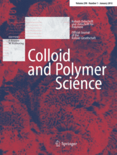
COLLOID AND POLYMER SCIENCE
Exploring the Interplay of Colloids and PolymersCOLLOID AND POLYMER SCIENCE is a prestigious peer-reviewed journal published by SPRINGER that serves as a vital resource for researchers, professionals, and students in the fields of Colloid and Surface Chemistry, Materials Chemistry, and Physical and Theoretical Chemistry. With ISSN 0303-402X and E-ISSN 1435-1536, the journal has established itself as a significant contributor to the scientific community since its inception in 1974, continuously providing valuable insights into the dynamic interplay between colloids and polymers. The journal is recognized for its rigorous quality, reflected in its Quartile rankings; it stands in Q3 for Colloid and Surface Chemistry and Physical and Theoretical Chemistry, and Q2 for Materials Chemistry and Polymers and Plastics in 2023. COLLOID AND POLYMER SCIENCE is an important platform for disseminating high-impact research that addresses fundamental and applied aspects of these critical fields, enhancing our understanding of material interactions and fostering innovations. The journal operates under traditional subscription models, ensuring that optimal academic rigor is maintained. With a strong emphasis on interdisciplinary studies, it encourages contributions that bridge gaps between theory and application, making it an essential reading for those aspiring to excel in the diverse world of materials science.